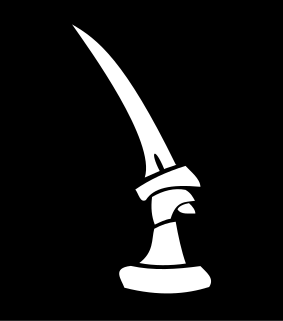39th Indian Infantry Division was an infantry division of the Indian Army during World War II, which became a Training Division in 1943 after its recovery into India from Burma.
The 23rd Indian Infantry Brigade was an infantry brigade formation of the Indian Army during World War II from 1941 to at least 1947. The brigade was formed in February 1941, at Loralai in India and in June 1941, assigned to the 14th Indian Infantry Division. In March 1942, the brigade was reassigned to the 23rd Indian Infantry Division, just before being renumbered 123rd Indian Infantry Brigade. As the 123rd the brigade served in the Burma Campaign with not only the 23rd but with the 14th again and the 5th Indian Infantry Division.

The 17th Infantry Division is a formation of the Indian Army. During World War II, it had the distinction of being continually in combat during the three-year-long Burma Campaign.

The 20th Indian Infantry Division was an infantry division of the Indian Army during World War II, formed in India, and took part in the Burma Campaign during World War II. In the immediate aftermath of the War, the bulk of the division was deployed to French Indochina to oversee the handover from Japanese to French rule.

The 14th Indian Infantry Division was an infantry division of the Indian Army during World War II. It fought in the Arakan Campaign 1942–43, and was subsequently converted into a Training Division, providing drafts of replacements for units of the Fourteenth Army during the Burma Campaign.

The 26th Indian Infantry Division, was an infantry division of the Indian Army during World War II. It fought in the Burma Campaign.
The 2nd Indian Infantry Brigade was an infantry brigade formation of the Indian Army during World War II. It was formed in Rawalpindi in September 1939. In October 1940, it was renamed 16th (Independent) Indian Infantry Brigade in November 1941, and left India for Burma. The brigade was caught in the Battle of Sittang Bridge where it suffered heavy losses. Instead of being reformed in September 1942, it was renamed yet again, this time to 116th Indian Infantry Brigade. Attached to the 39th Indian Infantry Division it now provided specialised jungle conversion training. An infantry battalion would spend from four to six months with the brigade, before being sent to the front to replace a tired battalion in one of the fighting divisions.
The 1st Indian Infantry Brigade was an infantry brigade formation of the Indian Army during World War II. It was formed in September 1939, in Abbottabad in India. It was assigned to HQ Rawalpindi District until May 1942, when it joined the 23rd Indian Infantry Division until the end of the war.
The 7th Indian Infantry Brigade was an infantry brigade of the Indian Army during World War II. It was formed in September 1939, by the redesignation of the Poona Independent Brigade as the 7th Indian Infantry Brigade and renumbered 4th in June 1940, A second 7th Brigade was formed in June 1940, and assigned to the 5th Indian Infantry Division. In September 1940, it was reassigned to the 4th Indian Infantry Division. The brigade formed the garrison at Mersa Matruh in early December 1940. In January 1941, with the rest of the 4th Indian Division were sent to fight in the Sudan campaign.
The 9th Indian Infantry Brigade was an infantry brigade formation of the Indian Army during World War II. Before the war the 9th (Jhansi) Infantry Brigade was a peacetime formation in Meerut district. This brigade was redesignated the 5th Indian Infantry Brigade and a new 9th Brigade was then formed all in September 1939. The new brigade was assigned to the 5th Indian Infantry Division in June 1940 to January 1944. It then spent February attached to the 7th Indian Infantry Division before returning to the 5th Division. The brigade spent two other short periods away from the 5th Division it was attached to the 17th Indian Infantry Division between March and April 1945 and was with the 19th Indian Infantry Division in April 1945, and returned to the 5th for the rest of the war.
The 8th Indian Infantry Brigade was an infantry brigade formation of the Indian Army during World War II. It was formed in September 1939, in India. In November 1940, the brigade was assigned to the 11th Indian Infantry Division. The brigade was attached to the 9th Indian Infantry Division from March 1941. The brigade took part in the Malayan Campaign and surrendered with the rest of the Allied forces in February 1942, after the Battle of Singapore.
The 33rd Indian Infantry Brigade was an infantry brigade of the British Indian Army that saw active service in the Indian Army during the Second World War, notably in the Burma Campaign.
The 48th Infantry Brigade, was raised as the 48 Indian Infantry Brigade, in October 1941, at Secunderabad, India. After an initial tenure with 19th Indian Infantry Division, it was transferred to the 17th Indian Infantry Division. In World War II it participated in the Burma campaign and in April 1942 was attached to 1st Burma Division. After the war the brigade returned to India as an independent brigade, and was located at Dhond in August 1947. After India gained Independence in 1947, 48 Indian Infantry Brigade was re-designated as 48 Infantry Brigade. Since then 48 infantry brigade has seen action Goa in 1961, as part of 17 Infantry Division; in the 1962 War in Kameng Frontier Division, Arunachal Pradesh, as part of 4th Infantry Division; and in the 1971 war, as part of 7th Infantry Division. Since the 1970s, 48 Infantry Brigade has been located in Ferozpur, Punjab, as part of 7 Infantry Division.
The 62nd Indian Infantry Brigade was an Infantry formation of the Indian Army during World War II. It was formed in November 1943, and assigned to the 19th Indian Infantry Division The brigade fought in the Burma Campaign and remained with the 19th Division until the end of the war.
The 98th Indian Infantry Brigade was an infantry brigade formation of the Indian Army during World War II. It was formed in April 1941, at Bareilly. The brigade served with three different divisions in the Burma Campaign. The 34th Indian Infantry Division between October 1941 and January 1942. The 25th Indian Infantry Division between January and March 1942 and the 19th Indian Infantry Division from March 1942, until the end of the war, fighting in the Burma Campaign.
The 4th Indian Infantry Brigade was an infantry brigade formation of the Indian Army during World War II. It was formed in September 1939, as the 7th Indian Infantry Brigade and renumbered 4th in June 1940, The brigade was assigned to HQ Rawalpindi District on formation. Then posted to the 26th Indian Infantry Division in April 1942. The brigade also served with the 14th Indian Infantry Division between March and April 1943, and them returned to the 26th Division, where it remained for the rest of the war apart from a short attachment with the 82nd Infantry Division in April 1945.
The 10th Indian Infantry Brigade was an infantry brigade formation of the Indian Army during World War II. It was formed in September 1939. In June 1940 it was assigned to the 5th Indian Infantry Division and in September 1940, sailed for East Africa. The brigade spent time attached to other formations, the 4th Indian Infantry Division between June 1940 and March 1941, and the British 10th Armoured Division between March and June 1942, where it was destroyed during the Battle of Gazala. A new brigade was formed in Egypt and assigned to the 10th Indian Infantry Division, with which it fought in the Italian Campaign from April 1944 until the end of the war.
The 20th Indian Infantry Brigade was an infantry brigade formation of the Indian Army during World War II.
The 13th Indian Infantry Brigade was an Infantry formation of the Indian Army during World War II. The brigade was formed in October 1940, at Campbellpore and assigned to the 7th Indian Infantry Division. It was transferred to the 1st Burma Division in July 1941, and after the withdrawal to India renamed the 113th Indian Infantry Brigade in June 1942. In August 1943, the brigade became a dedicated jungle warfare training brigade until the end of the war.
The 14th Indian Infantry Brigade was an infantry brigade formation of the Indian Army during World War II. The brigade was formed at Attock in October 1940, and assigned to the 7th Indian Infantry Division. In April 1942, the brigade was renumbered as the 114th Indian Infantry Brigade. The brigade fought in the Burma Campaign with the 7th Indian Division and later the 26th Indian Infantry Division.






